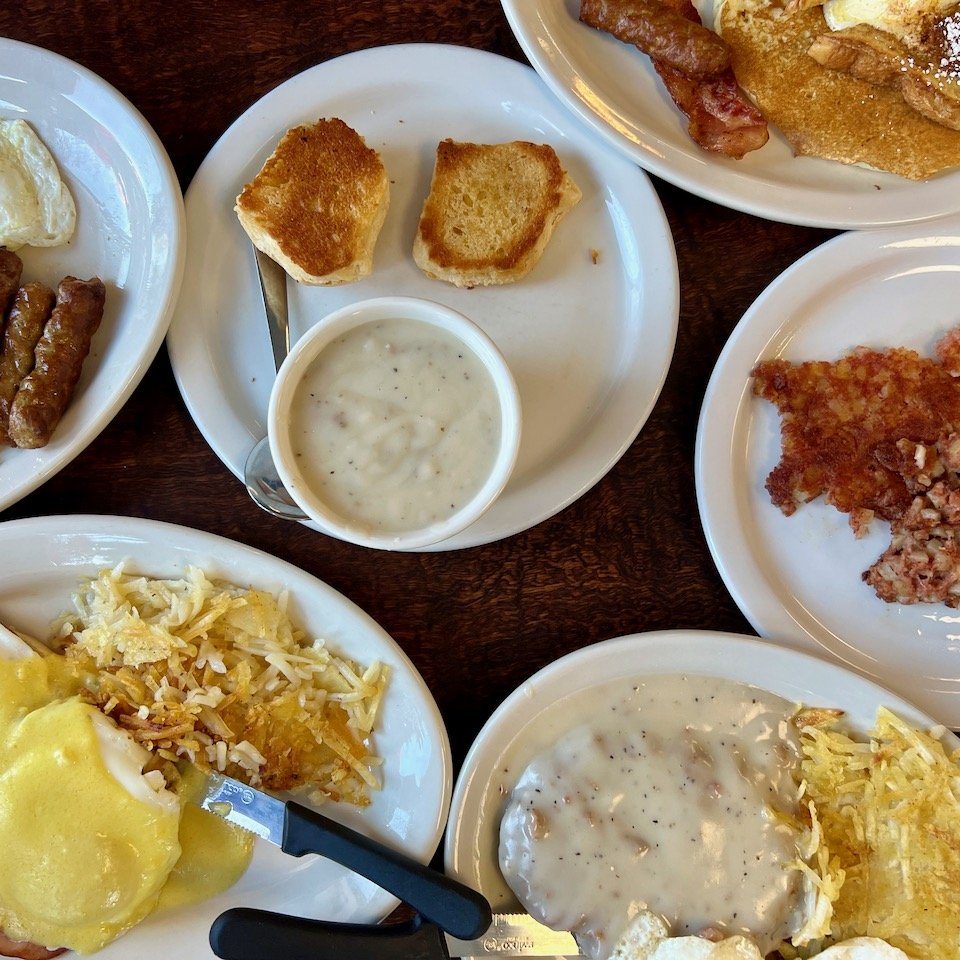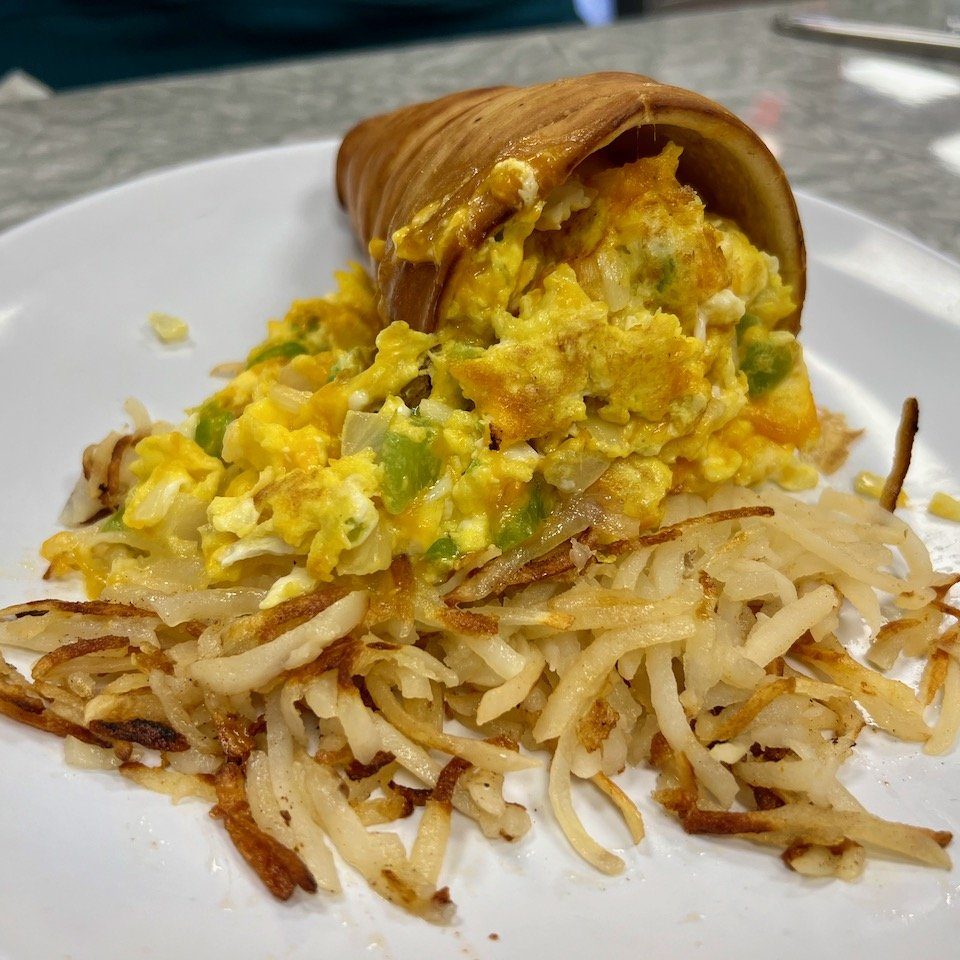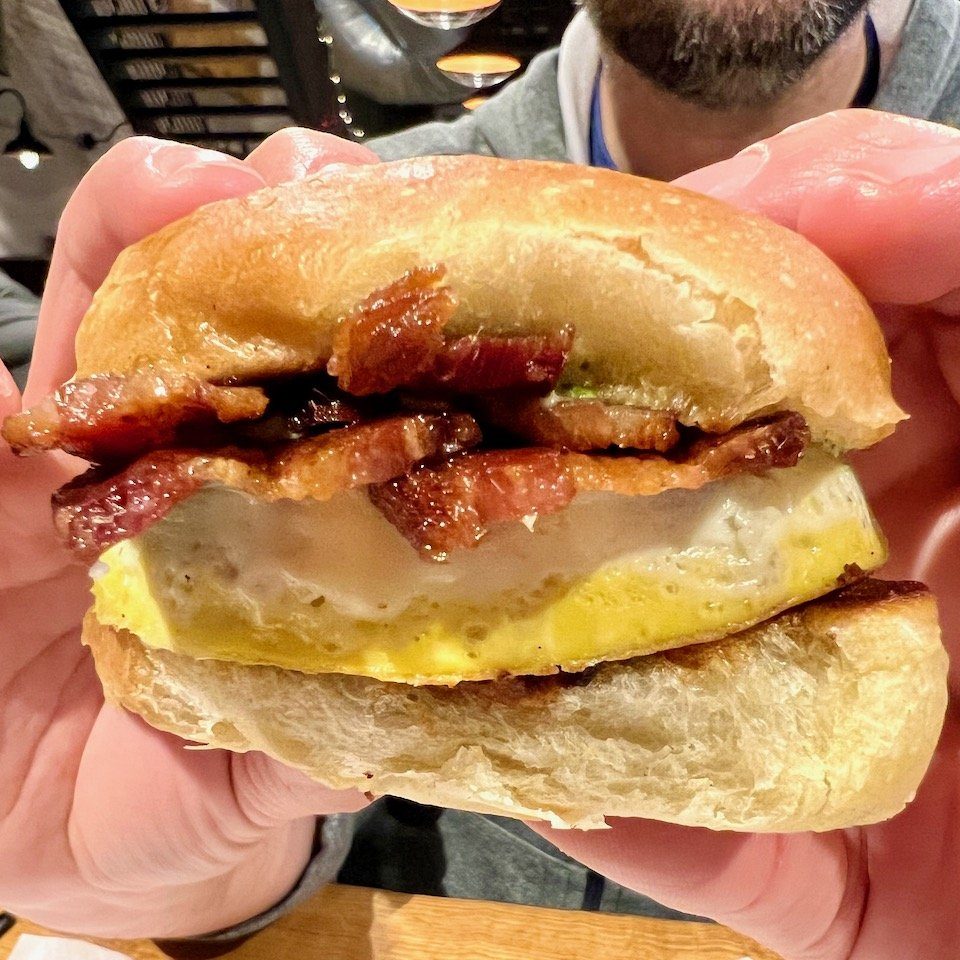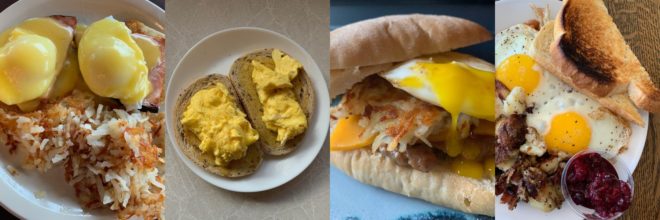
“How do you want your eggs?”
How many times have you been asked that at a restaurant and not known how to answer? “What’s the way where it’s fried but the yolk is still runny?” “Aren’t sunny side up and over easy the same thing?” “What’s the difference between over easy and over medium?” “What the heck are basted eggs?”
Eggs really tie breakfast together, and there are plenty of benefits: they’re inexpensive, easy to prepare, cook quickly, and offer a solid source of protein.
So how do you answer the next time a server asks how you’d like your eggs? Here are…
15 Ways to Cook an Egg
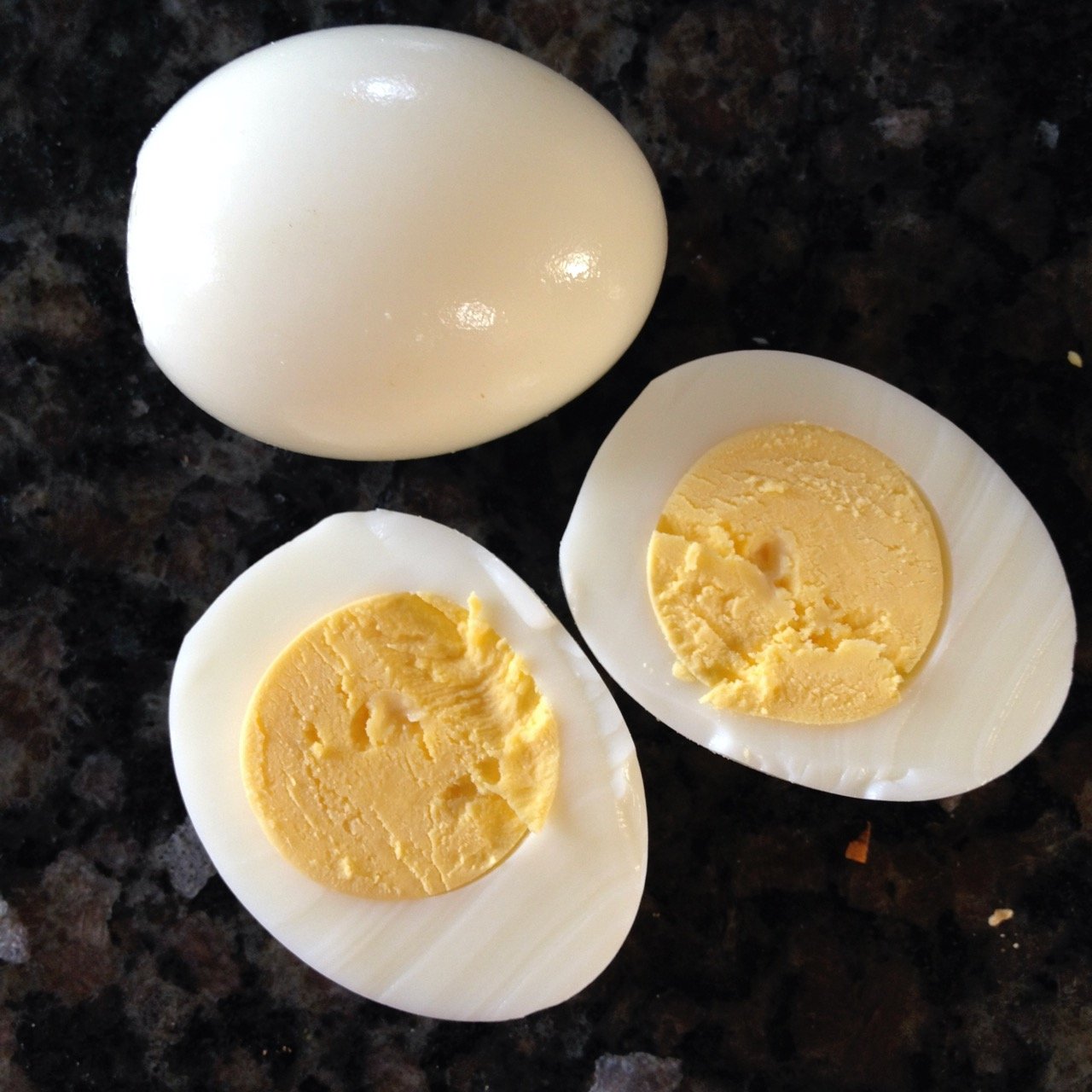
1. Hard Boiled
A hard boiled egg is cooked in its shell in boiling water. The “hard” refers to the consistency of the egg white (or albumen) and the yolk. Making them is simple. Fill a pot with enough water to cover your eggs by about two inches. Bring it to a boil and carefully drop in the eggs and leave them for 10-12 minutes.
For easier peeling, place the eggs immediately in an ice water bath after boiling, then gently tap and roll them on a counter. (There’s also the gimmick of adding a teaspoon of baking soda to the boiling water to help loosen the shells, cracking the shells off both ends, and blowing the egg out of its shell. Look it up on YouTube.) Bonus: you can hard boil a bunch of eggs at a time and refrigerate them. Eat them with a sprinkle of kosher salt, or chop onto salads.
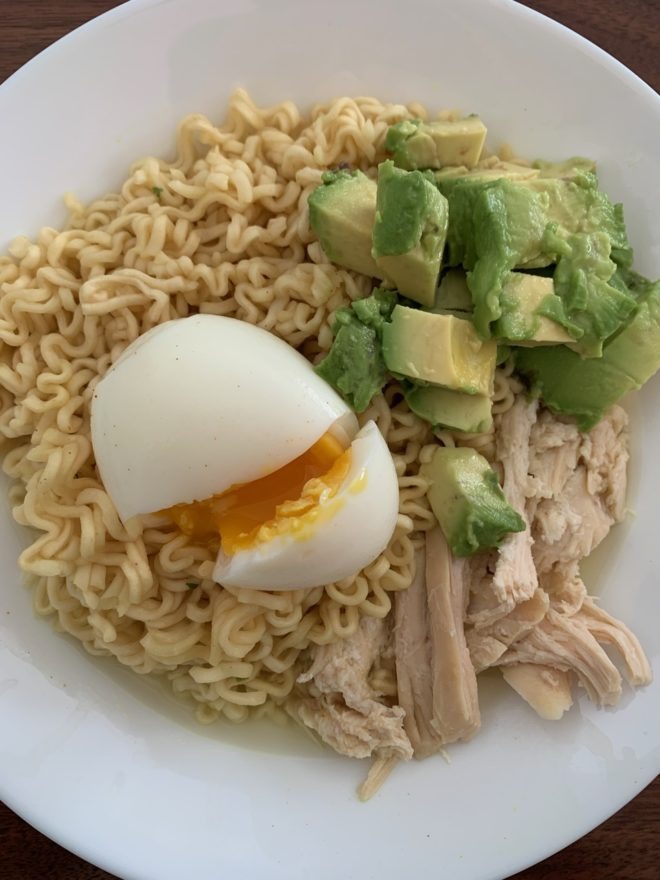

2. Soft Boiled
Soft boiled eggs follow the same process as hard boiled eggs, but you cut the cooking time roughly in half. This gets the egg white cooked while leaving the yolk runny. Our preferred method is the “six minute egg,” which sounds way fancy. (“This is a pile of breadcrumbs and a six minute egg.” “Ooooooo!”) The six minute is just like it sounds: bring your water to a boil, gently lower in the eggs, set a timer for six minutes, then remove the eggs and drop them in an ice bath.
Sometimes soft boiled eggs are eaten in the shell, stood upright in little egg cups. You can then daintily tap the top of the egg with a spoon and scoop out the insides. They’re great on toast, sprinkled with salt, pepper, and hot sauce. We also love dropping a couple on a thick black bean soup.

3. Hard Scrambled
The almighty scrambled eggs. When they’re done right, they’re my favorite preparation. I like that scrambled eggs can be made by accident: “Oops, I dropped these eggs. I guess I’ll just mix them up over some heat.”
Scrambled technically means that the whites and yolks are broken and mixed together. Hard scrambled eggs are cooked all the through. This is the default preparation for scrambled eggs at most restaurants, and while they’re good, they border dangerously on dry.
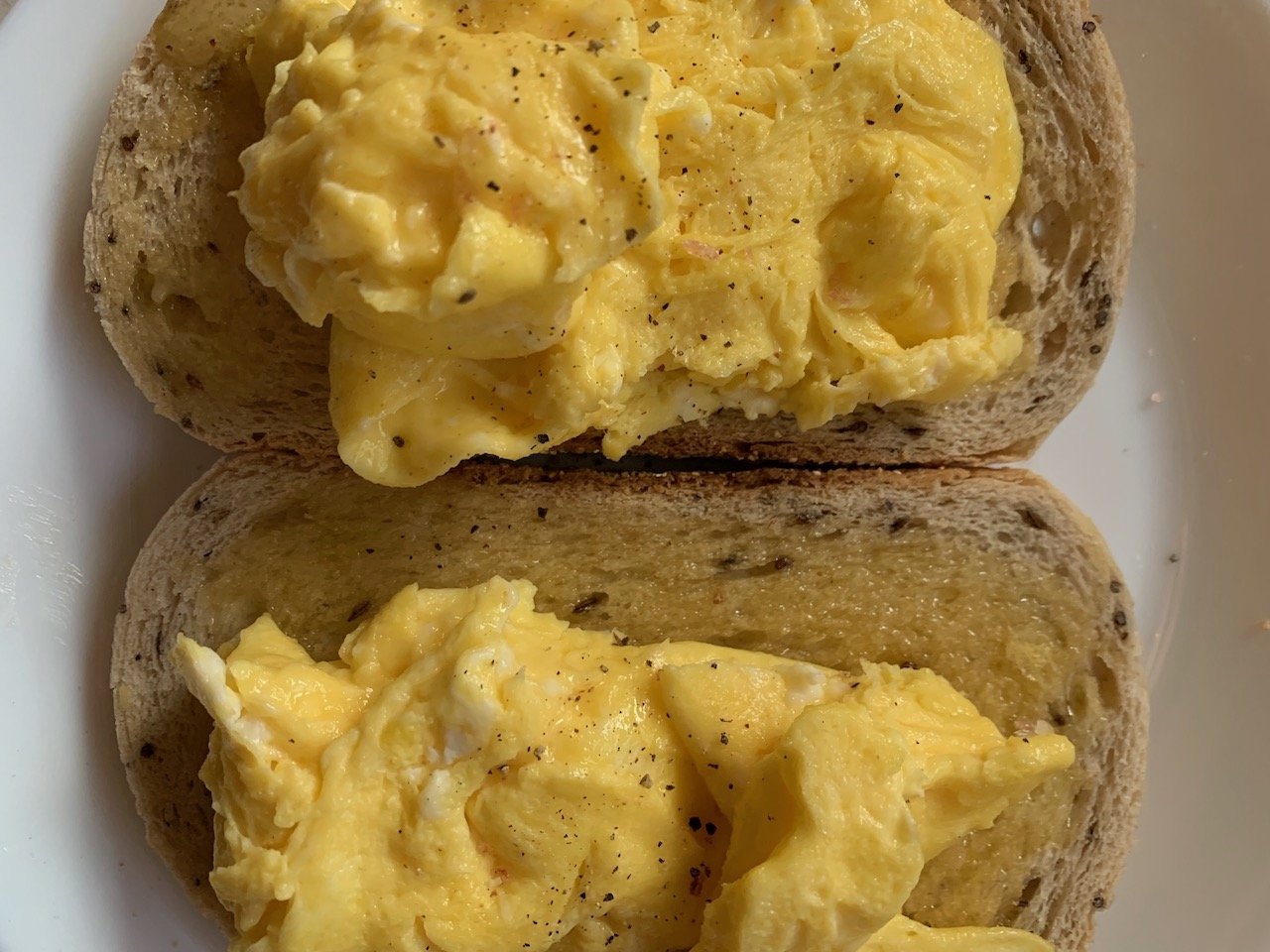
4. Soft Scrambled
That’s why I prefer soft scrambled eggs, sometimes referred to as “wet.” The texture is 10x better, and they play more nicely with other ingredients.
The difference between soft and hard scrambled eggs is cooking time. If you want soft scrambled eggs, you need to keep in mind that eggs. cook. quickly. You can’t walk away from them. Whip your eggs (I add a little milk) in a separate bowl. Heat your pan no higher than medium, grease it, pour the eggs in, then stay close with a spatula. Turn and fold them repeatedly while they cook. Use the spatula to prevent them from spreading out, especially up the sides of the pan; when they spread too thin, they’ll over-cook quickly.
I usually fold them until they no longer look runny, but still look wet (i.e. light is reflecting in them). Have your plate ready so you can remove them from heat immediately. They’re perfect on buttered toast with salt and pepper; try adding slices of cheese or sautéed kale.

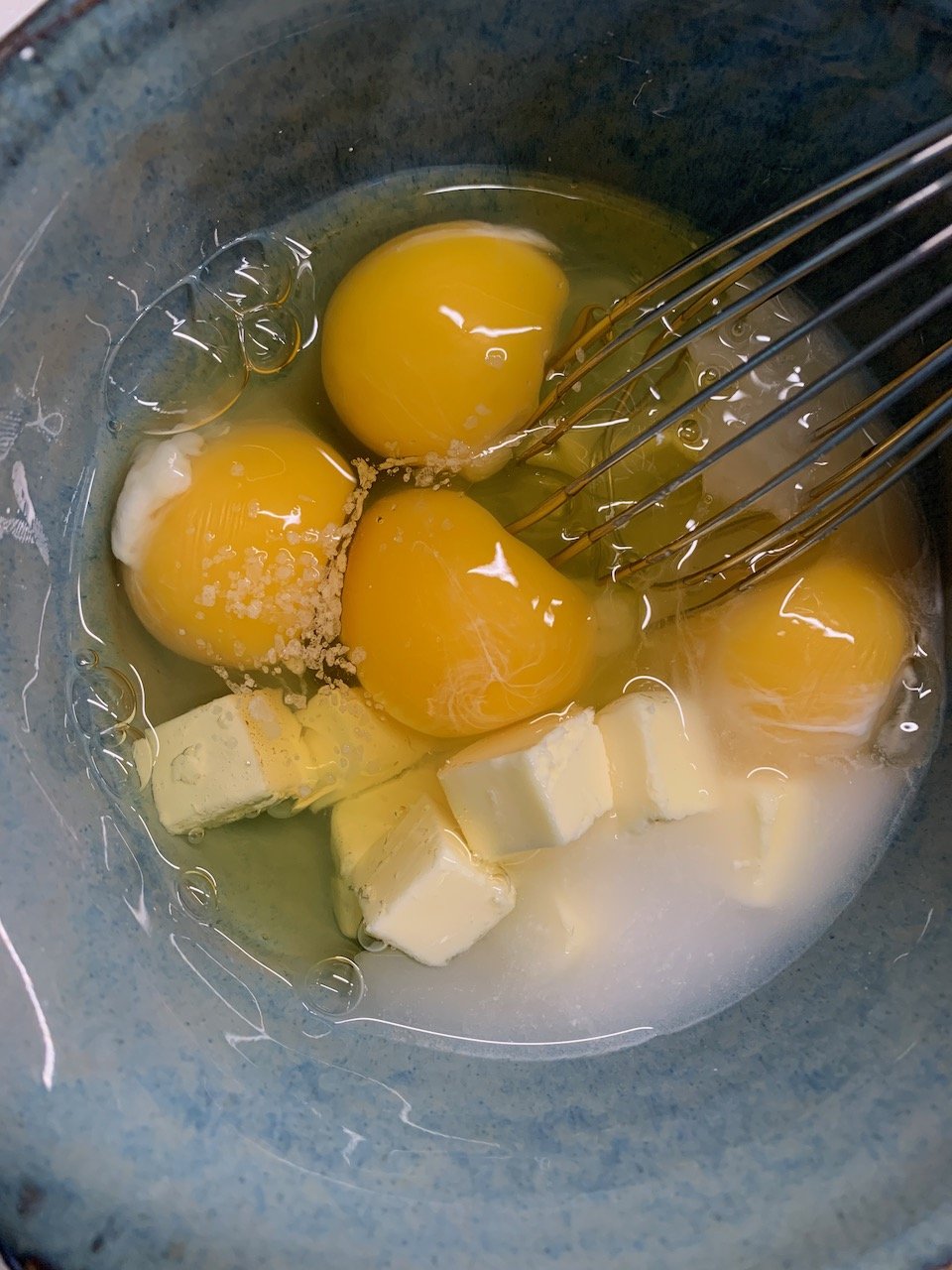

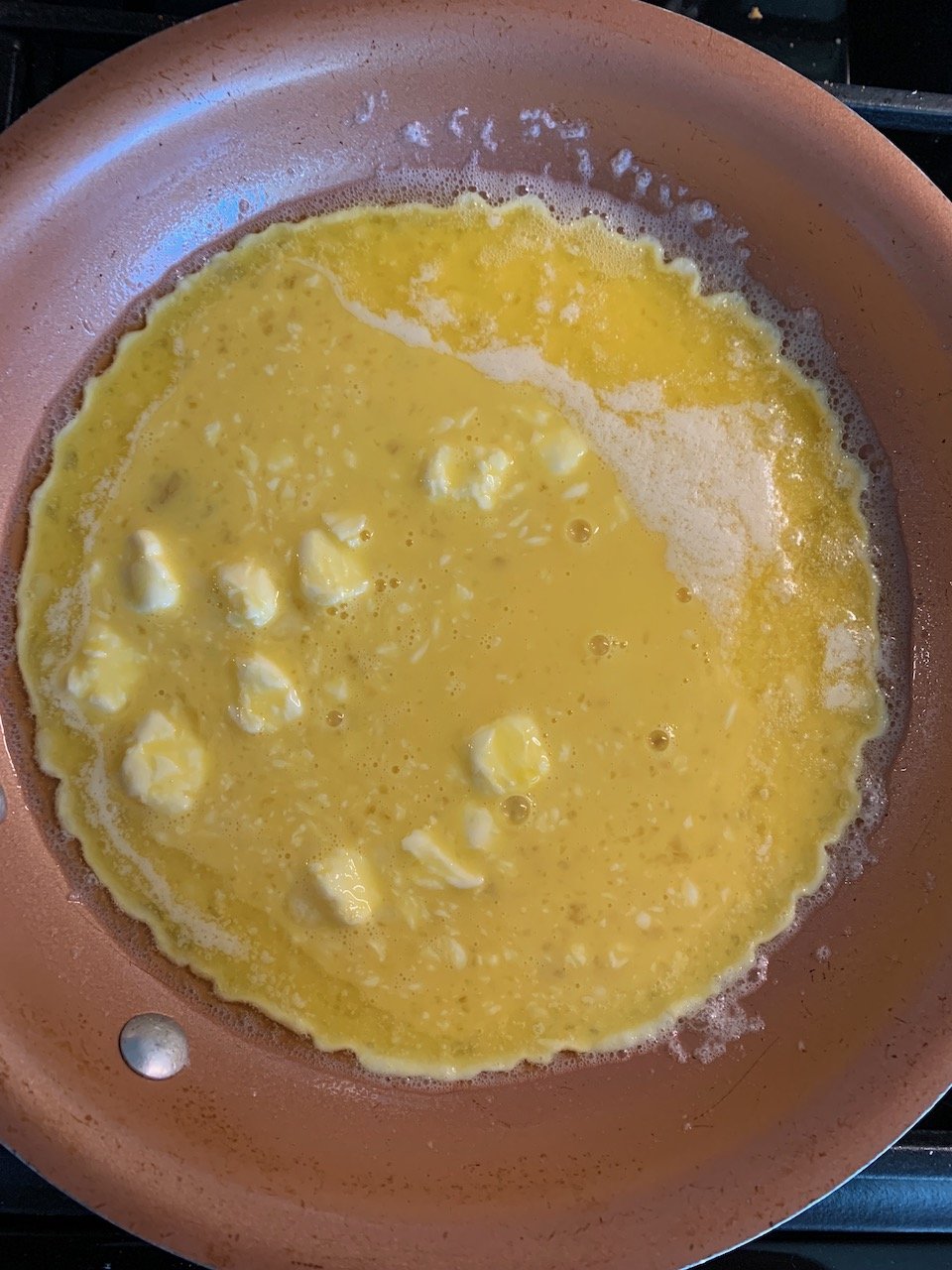
4a. “Perfect” Scrambled Eggs
If you want super creamy soft scrambled eggs, there are a few different methods espoused by different chefs.
- You can use the method Gordon Ramsay’s (watch it here). Drop eggs into a pan over medium-high heat, along with one, thin pat of butter for each egg. Then start stirring with a spatula. Break the yolks, let them mix with the butter and whites. And keep stirring. If the pan gets too hot, lift it off the heat briefly. And keep stirring. Do this for about 4-5 minutes, until the eggs start coming together. Right before you take them off the heat, add a dash of milk, sour cream, or creme fraiche. Stir that in, then ladle the eggs onto toast and sprinkle with herbs (chive, dill, green onion) or salt and pepper.
- One of my favorite chefs, J. Kenji Lopez-Alt, is known for his scientific approach to cooking. He perfected his method for extra-creamy scrambled and detailed them in the New York Times here. His way involves making a slurry with water and corn starch to add to your eggs, then using water to gauge the ideal temperature of your pan for cooking.
Regardless of method, they’ll result in some of the creamiest, softest eggs you’ve ever tasted.

4b. Omelets & Frittatas
Scrambled eggs can be manipulated in many ways. Ordering plain scrambled eggs means they’ll be mixed and moved in the pan, whereas an omelet or frittata indicates that the scrambled eggs are cooked until they’ve stabilized into a usable form and topped with other ingredients: cheeses, meats, vegetables, anything.
A frittata is typically open-faced, whereas an omelet is folded over in half onto the additions. But the egg base remains the same (except in egg white omelets, where yolks are separated out).

4c. Scrambles & Hashes
These preparations are pretty simple, as far as eggs go. A scramble usually means other ingredients are scrambled in the pan with the eggs. This could include meats, cheese, sautéed veggies, or diced potatoes (or, yes, hot dogs). Good if you’re a fan of scrambled eggs and, well, everything else breakfast has to offer.
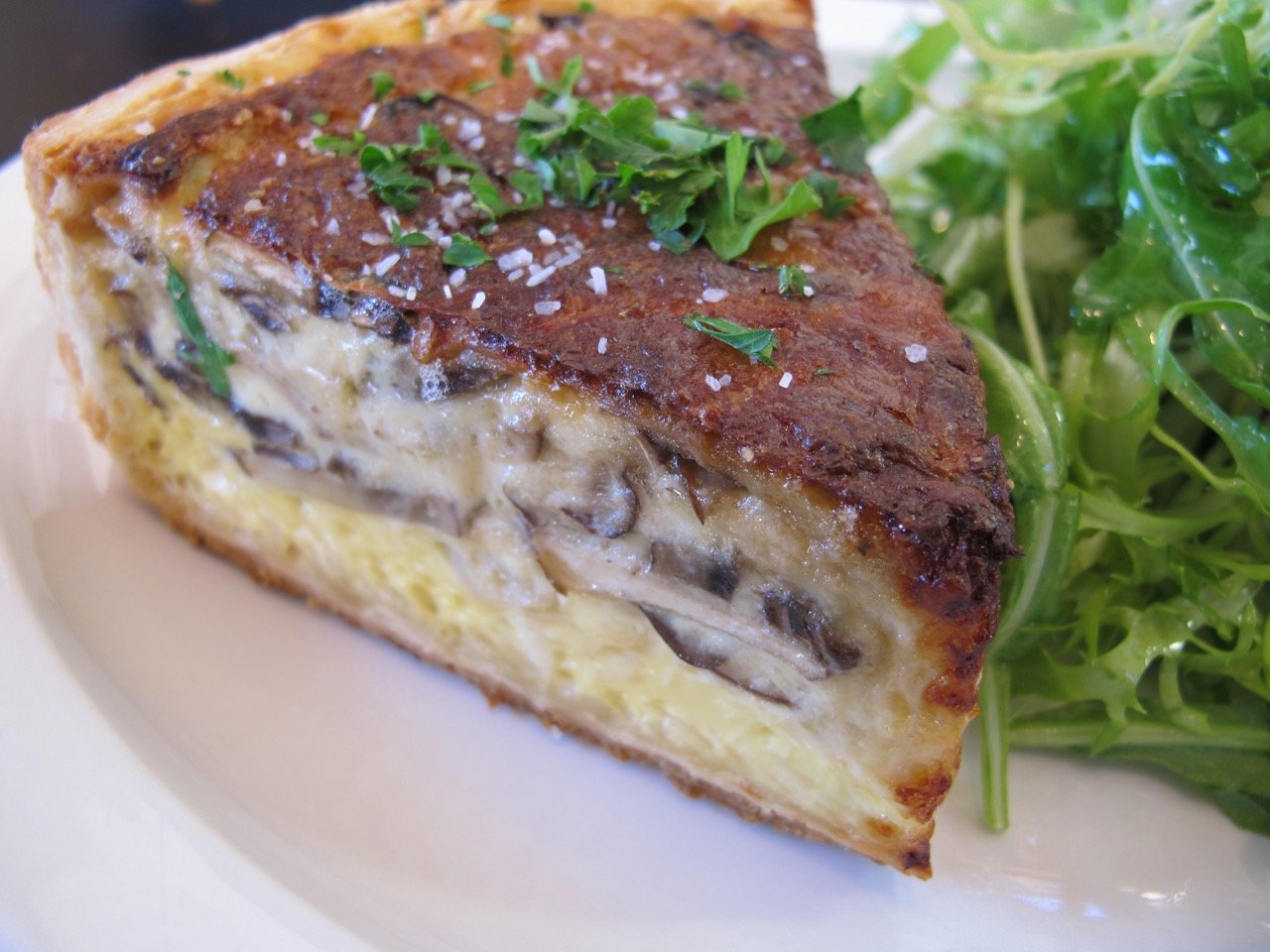
4d. Quiche
Think of quiche as a breakfast pie! Quiche is easily made with scrambled eggs, a pre-made pie crust, and your choice of fillings: bacon and sausage, loads of cheese, mushrooms, roasted tomatoes and artichokes, you name it.
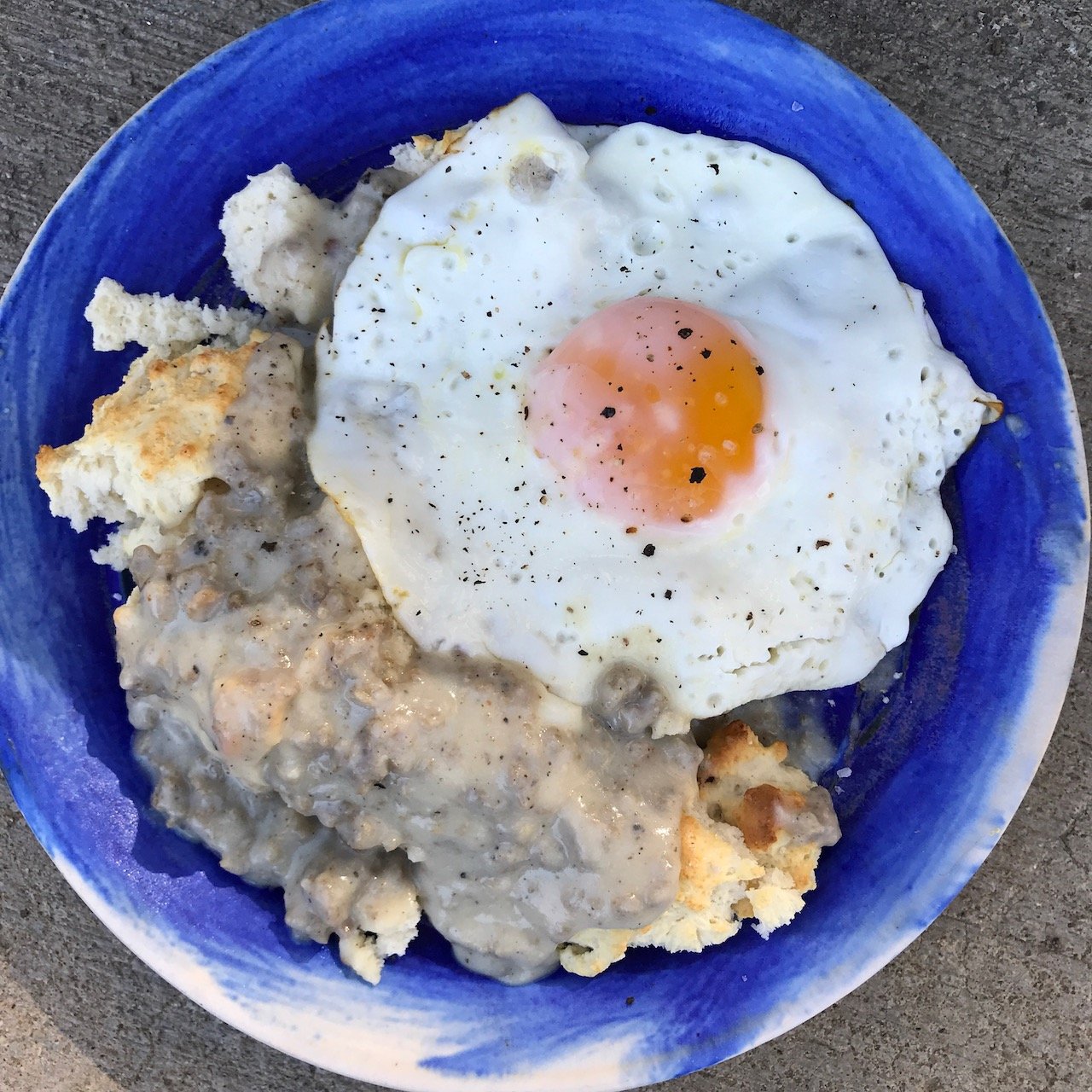
5. Sunny Side Up
Sunny side up means your egg yolk looks like a bright morning sun. To make: crack an egg directly into your greased frying device. Then fry it until the edges brown, WITHOUT flipping. Flipping your sunny side up egg turns it into an over easy egg. The yolk is runny, and depending on how long you fry it, the albumen is completely or partially set. We refer to these as runny or “dipping” eggs. The runny yolk is great for dipping toast into.

6. Over Easy
Eggs over easy and sunny side up are often using interchangeably, but they are different. You go from sunny side up to over easy by simply flipping your egg when the edges are brown. The “easy” doesn’t refer to the simplicity of turning over an egg, but the state of your yolk. “Over easy” means the egg is flipped and cooked just long enough to make a film on the top of the yolk. When served, the yolk – and some of the whites – are still runny.

7. Over Medium
Over medium is the next step after easy: they’re fried, flipped, and fried a little longer, enough to cook the whites through and brown the edges slightly. You’ll develop a thicker film on your yolk, but the inside is still runny. Good for those like the dipping quality without a watery egg white.

8. Over Hard
And over hard is the final step. Over hard is fried, flipped, and fried again – usually with the yolk broken – until both the white and the yolk are completely cooked. Just tap the edge of your spatula into the yolk or poke it with a fork before turning it over. Over hard eggs are perfect for breakfast sandwiches, if you don’t want a messy, drippy yolk.
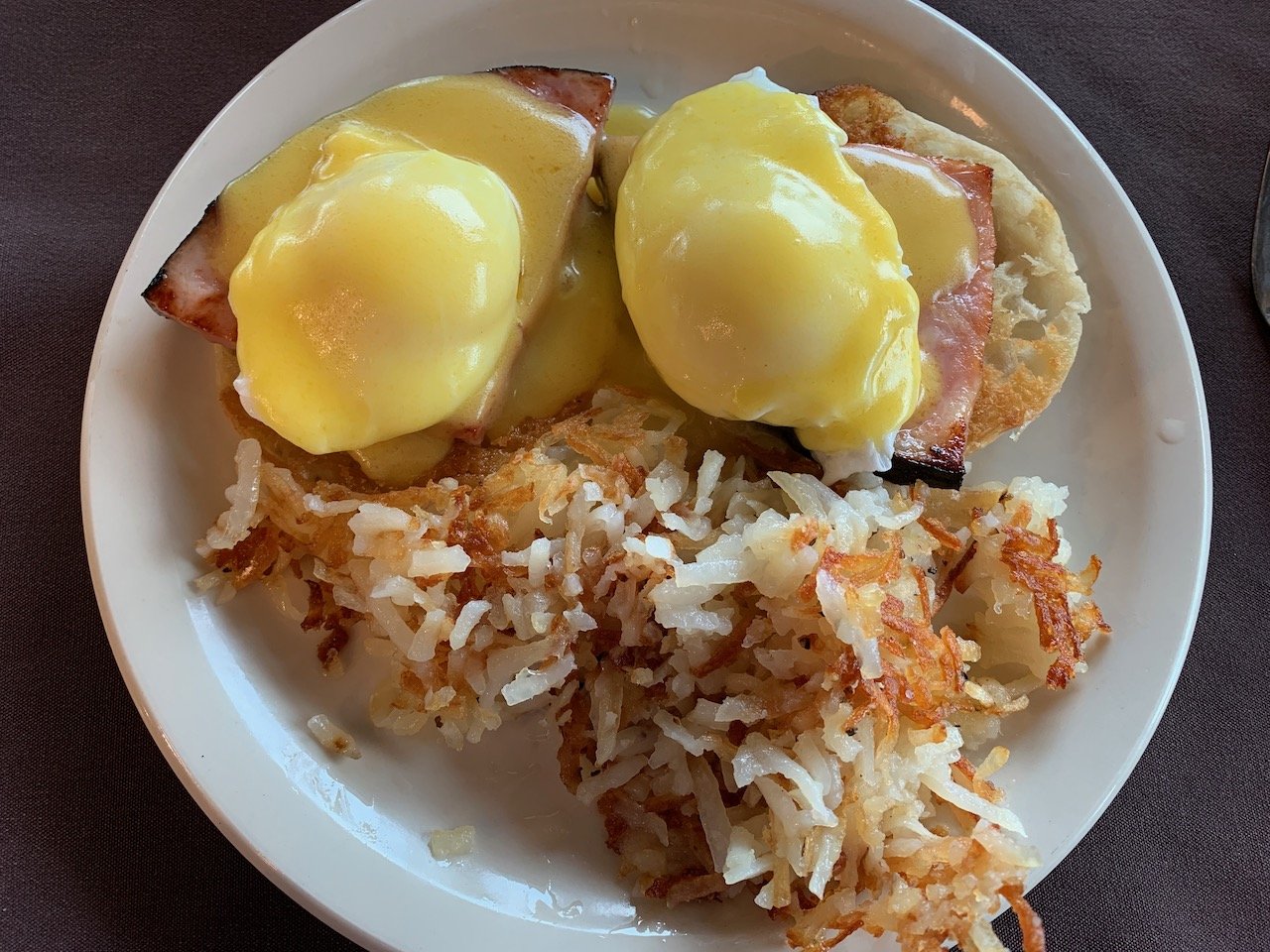
9. Poached
Poaching ties with soft scrambled as my favorite preparation. It’s like boiling but without the shell, or like over medium that skips contact with the pan. These means you’re avoiding any hard edges. The white is cooked through and the yolk is warm and runny. Just imagine it mixing with a bright hollandaise on an eggs benedict.
Methods for poaching vary. Restaurants looking to poach in bulk will often immerse ramekins with raw eggs into boiling water, sometimes a whole tray full at a time. If you’re just poaching at home, it’s actually much easier than you may think. I haven’t perfected my personal method, but the two that have worked for me are:
- The Whirlpool. Heat your water just shy of a rolling point. Some recipes say add a dash of vinegar to help the whites set up faster, but it always ends up tasting slightly like acetic acid to me. Crack the egg into a tiny bowl. Swirl the water in your pan to create a whirlpool, then carefully drop the egg into the center. The swirling pulls whites altogether in the center. Leave it in the water for about five minutes, then lift out with a slotted spoon.
- The Strainer. Heat water. (Add vinegar if desired.) Crack the egg into a mesh strainer to let the most watery portion of the whites (it’s not much) drip out – this prevents danglers. Carefully decant the egg from the strainer into the water. Cook for about five minutes. Retrieve with slotted spoon.
And if you make a mistake… well, just look up some recipes for egg drop soup.

10. Baked or Shirred
Baked eggs are cracked and baked in a dish. “Shirred” refers to the flat-bottomed dish in which they’re frequently cooked. They’re almost always mixed with other ingredients. The white mixes in and gets cooked through, while the yolk is left soft. For example: a tomato provencal dish (pictured from Pistacia Vera), with eggs cooked into a bed of cream, tomatoes, cheese, and herbs. Or the North African/Mediterranean dish shakshouka (like at Mazah). The benefit of this preparation is that the egg really blends into the ingredients.

11. Basted
I’ve come across some some eggs on restaurant menus that are labeled as basted but are clearly poached. Generally basted means liquid or steam is used to thoroughly cook the egg white without flipping. For instance, while frying an egg in butter, you repeatedly scoop and pour the extra butter on top of the egg. This cooks the yolk and top whites without forcing you to flip it. Alternatively, you can also squirt some water into the pan and then cover the egg with a lid, to steam the whites. If you do this quickly, you can cook the whole egg before the edges start to brown, which seems to be the appeal of basted eggs (much like poached eggs).
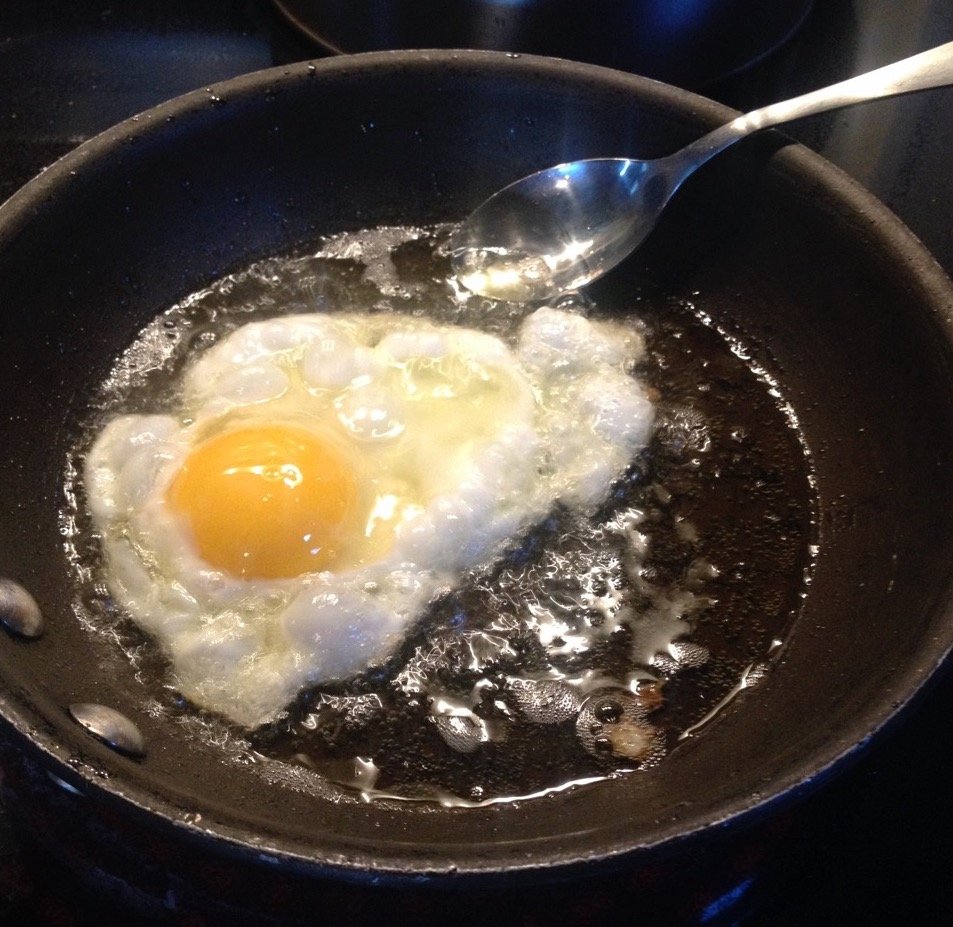
(Sorry this picture isn’t very good! You try handling an iPhone while scooping hot oil.)
11a. BONUS: Spanish fried eggs
One specific form of basting is known as Spanish fried eggs. They’re popular in France – just kidding, Spain – and are fried at high temps in olive oil, while you spoon the hot oil over the egg. You’re in danger of getting splashed, but we all need to live a little, right? I fry my eggs over medium heat, just below the oil’s smoke point. Crack an egg into a small bowl first, then ladle it into the hot oil, and start scooping oil over the white and the yolk for about 1 minute. The result is the best of all worlds: crispy edges, creamy whites, and a runny yolk. Bonus: try different olive oils to affect the final flavor.
Okay, so that was actually fifteen ways to prepare eggs. But you get the point: eggs are versatile, even in the different textures and flavors they offer through different cooking methods. And there’s so much you can do with eggs once they’re cooked: fold scrambled eggs in a burrito, layer a fried egg on a burger, chop a hard boiled egg in a salad, or put poached eggs on everything. Regardless of how you use them, they enhance any breakfast dish and they stand perfectly fine on their own.
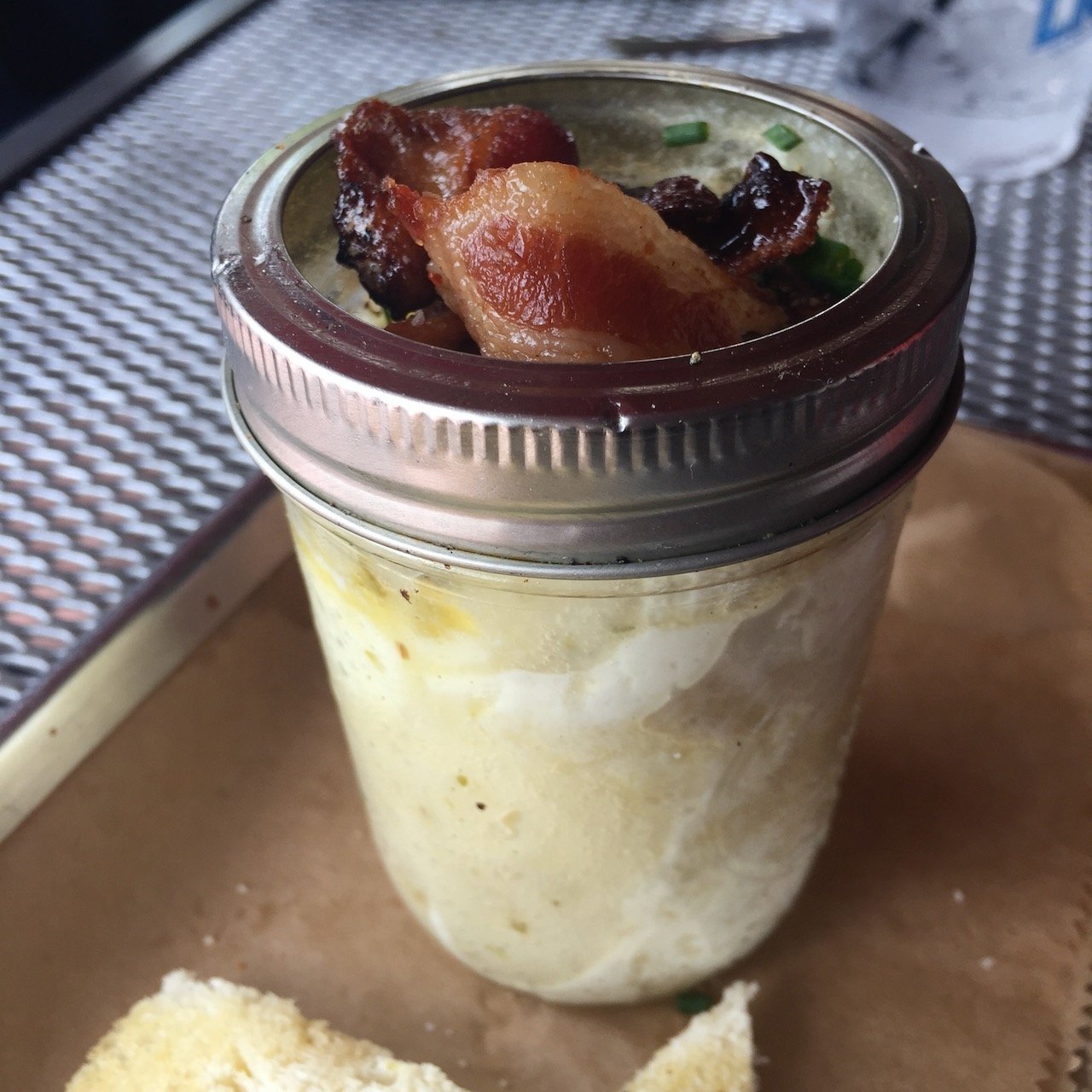
12. Coddled eggs
Coddled eggs are cracked into a small cup or ramekin, then heated in a water bath just below boiling temperatures. Depending on how long you cook them, you can achieve something akin to easy, medium, or hard yolks. You can get fancy with an egg coddler or bain-marie, or use a simple porcelain ramekin or glass canning jar. They’re flexible, too: cook the egg solo and use it as a topping, or dress it with salt and pepper, crumbled bacon, shredded cheese. When they’re done right (meaning they’re not over-cooked), they’re wonderfully creamy.

13. Creamed eggs
Reminiscent of creamed chipped beef on toast, creamed eggs combine diced hard-boiled eggs with a white gravy made from bechamel sauce and served on toast or biscuits. Really, it’s just a use of hard boiled eggs, but creamed eggs on toast are popular in many places across the U.S.
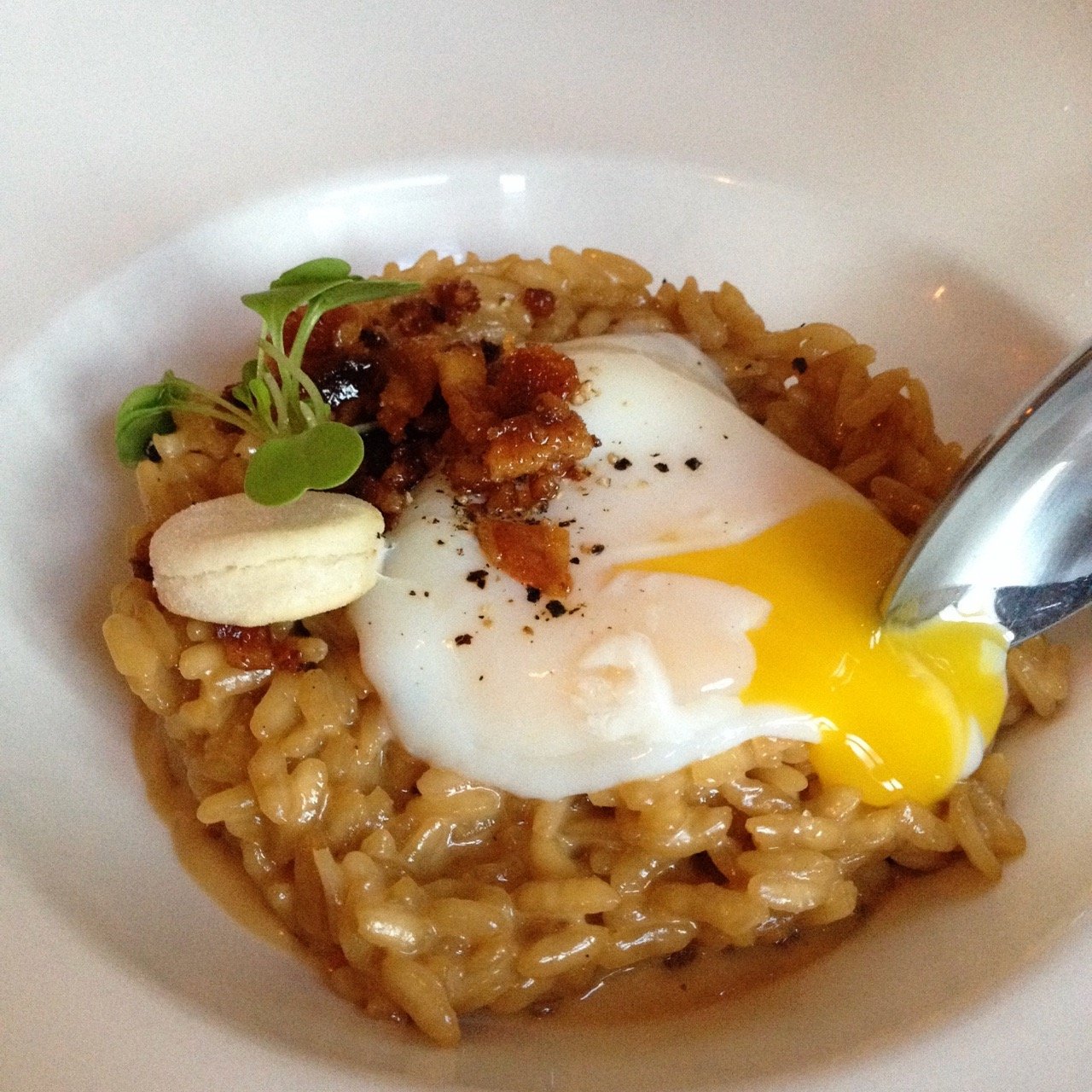
14. The 62-Degree Egg
The 62-degree egg – also referred to as the 62.5-degree or 63-degree egg – requires special equipment like an immersion circulator to achieve. That’s why you most often see it in restaurants. Eggs in the shell are immersed in water and cooked for about 45 minutes. When eggs are cooked in the 62-63 degree range in Celsius, the white and yolk hit the same amazingly creamy texture. Then, like a good soft boiled or over easy egg, they’re perfect on everything – like the bacon risotto from Veritas in Columbus.
Need some ideas for cooking with eggs? Read my post Egg It: Enhancing Almost Any Dish With Eggs.





